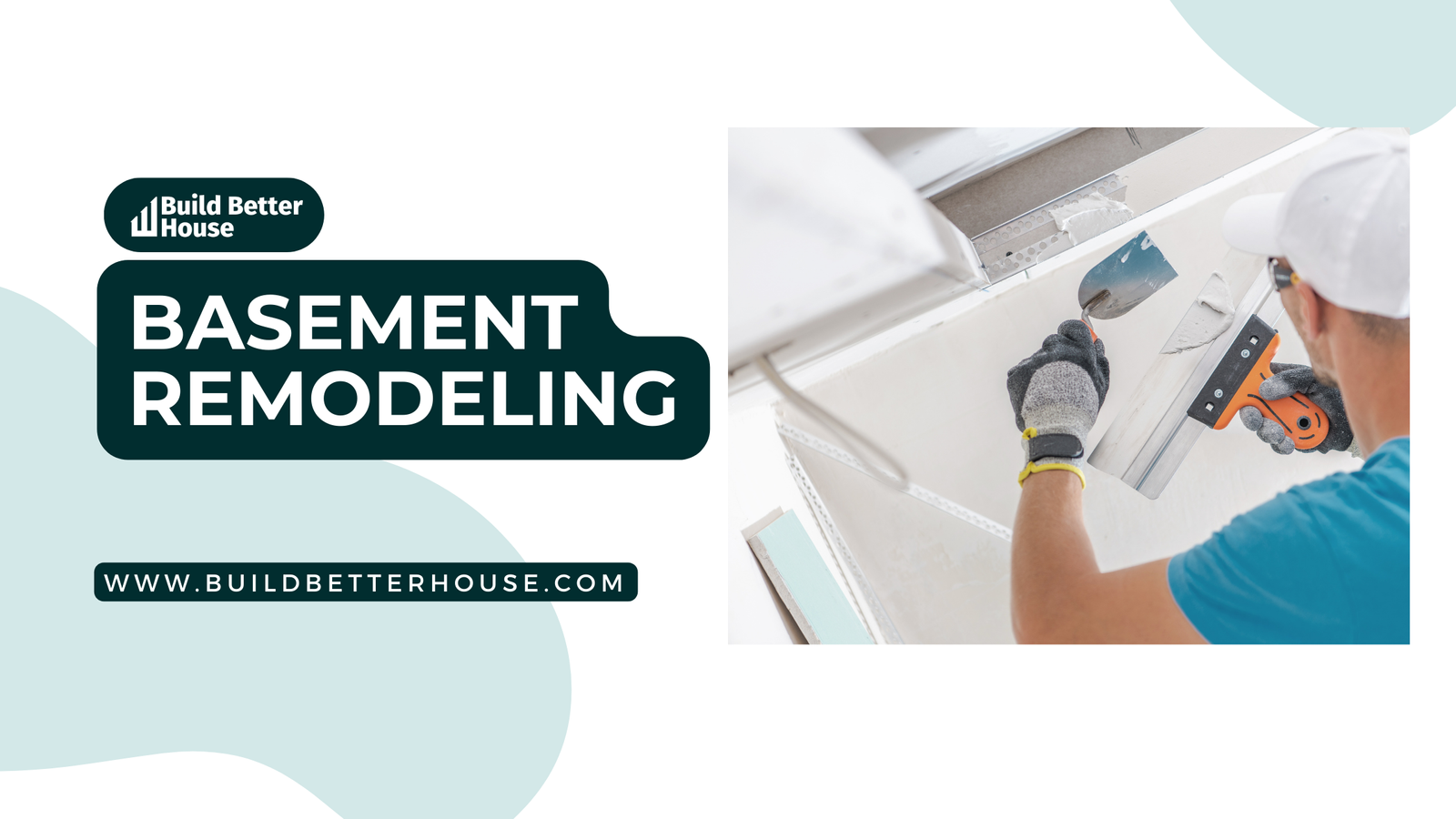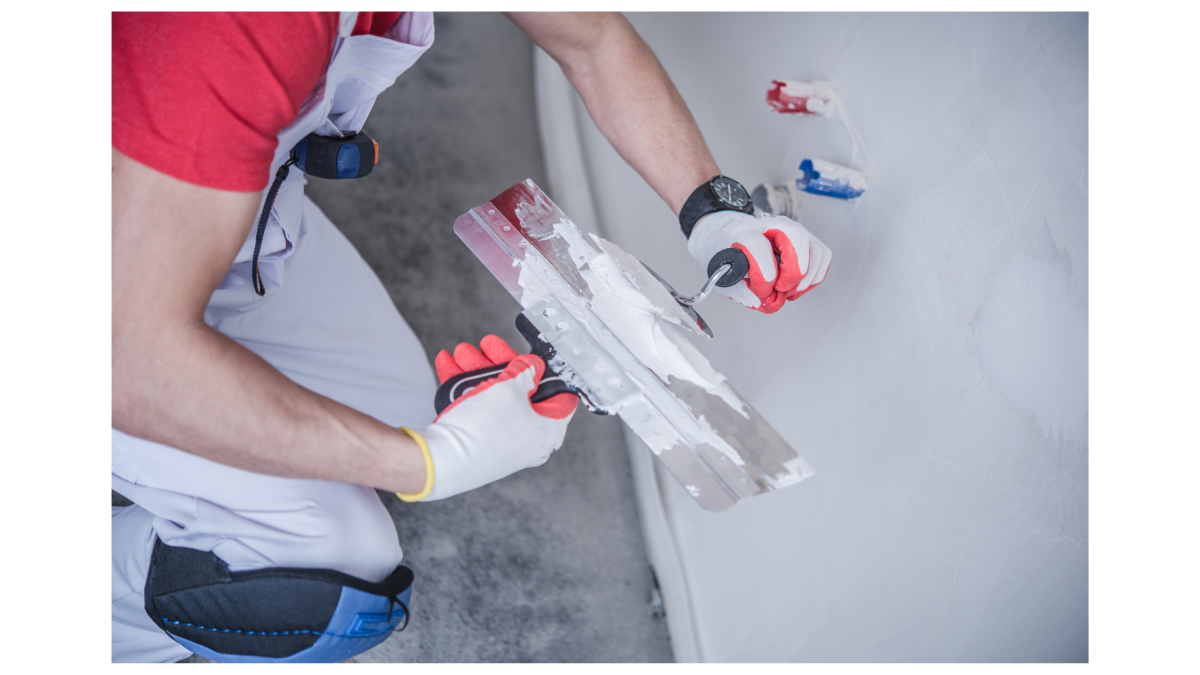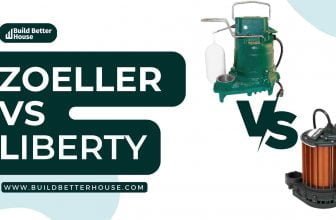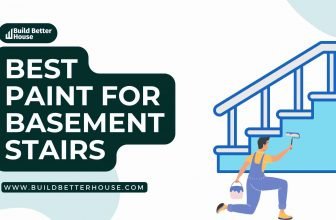Basement Remodeling: Transforming Unused Spaces Efficiently

Remodeling your basement is a fantastic way to create additional living space and increase the value of your home. With proper planning and execution, a basement remodel can transform a once dark, damp, and uninviting space into a comfortable and functional area tailored to your family’s needs. Your new basement can become the perfect place for a home theater, guest suite, workout room, or even a children’s play area.
Before diving into your basement remodeling project, it’s important to outline your goals and needs for the space. Carefully assess the existing structural elements, such as support beams and ceiling height, to determine if they need to be modified or relocated. Also, consider any potential moisture issues and ensure proper waterproofing and insulation measures are in place to create a healthy and comfortable living environment.

Key Takeaways
- A basement remodel can transform a dark, damp space into a functional living area.
- Carefully assessing structural elements, waterproofing, and insulation is essential.
- Planning and designing your remodeled basement will tailor the space to your family’s needs.
Planning Your Basement Remodel
Assessing Your Space
Before diving into your basement remodeling, take some time to assess your space. This means evaluating its size, shape, and existing features such as support beams, utilities, and ceiling height. During this phase, start gathering inspiration and ideas for your ideal basement space. Think about the various functions your remodeled basement could serve, such as a home office, family room, playroom, media room, game room, home gym, craft room, or wet bar.
Setting Goals
With a clear understanding of your basement’s current layout, set realistic goals for the remodel. Focus on transforming the space into a functional and aesthetically pleasing living area. Whether you’re aiming for a cozy family room or a practical home office, ensure your goals align with your needs and preferences while keeping resale value in mind.
Establishing a Budget
Developing a budget for your basement remodel is crucial. Consider factors like construction costs, materials, furnishings, and decorations. Your budget should also include a contingency fund for unexpected expenses. By setting a realistic budget, you can explore different design ideas and allocate funds accordingly, ensuring a successful and enjoyable remodeling experience.
Hiring Professionals
It’s essential to hire professionals who are experienced in basement remodeling. This may include architects, contractors, and interior designers. Hiring a professional team ensures not only that your remodel adheres to local building codes, but also that the quality of the work meets your standards. Having experts on board can save you time, money, and potential headaches in the long run.
By carefully planning your basement remodel, from assessing your space to hiring professionals, you can be confident that you are transforming your basement into an inviting, functional, and valuable living area.
Structural Considerations
When remodeling your basement, one of the most important aspects to consider is the structural integrity of the space. This includes inspecting the foundation, concrete, egress, as well as windows, doors, and staircases. Ensuring these elements are safe, functional, and up to code is crucial for a successful basement remodel.
Windows
Windows in your basement serve the dual purpose of providing natural light and functioning as an egress point in case of an emergency. When installing or upgrading windows, make sure they meet your local building codes for egress requirements. This usually entails the window being large enough for an adult to easily exit and open without special tools.
Another aspect to consider is the type of material for the window frames. Concrete or concrete block construction is commonly used in basements to ensure durability and resistance to moisture. Whether you’re installing new windows or upgrading existing ones, remember to properly insulate and seal them to prevent drafts and water intrusion.
Doors
Installing doors in your basement remodel is an essential element for creating functional living spaces. Like windows, doors must also comply with local building codes, specifically relating to egress, fire safety, and accessibility. Consider using solid-core doors for added soundproofing and insulation.
When adding external doors, pay attention to the slope of your property and the location of the foundation. Proper engineering and construction practices are crucial to prevent water and moisture issues around basement doors. While preparing the door opening, consult with a structural engineer, if needed, to ensure the surrounding walls can handle the new load.
Staircases
A well-designed staircase plays an important role in connecting your basement with the rest of your home. Safety should be your top priority when constructing or remodeling a staircase. Make sure your stairway complies with local building codes, has sturdy handrails, and adequate lighting to prevent accidents.
When selecting the material for your staircase, consider factors such as durability, maintenance, and resistance to moisture. A concrete staircase can be a good choice for your basement, as it provides strength and low maintenance in the long run.
In summary, when remodeling your basement, pay special attention to structural considerations such as windows, doors, and staircases. Ensuring these elements meet building codes, are functional, and maintain the overall integrity of your basement will lead to a successful remodeling project.
Waterproofing and Insulation
Waterproofing and insulating your basement is crucial in protecting your home from moisture and energy loss. When remodeling your basement, carefully consider the following sub-sections to ensure a dry and energy-efficient space.
Drainage Systems
A proper drainage system can help prevent water buildup and seepage in your basement. Consider installing a sump pump to remove water from your foundation efficiently. There are different types of sump pumps available, so choose one that best suits your needs. Make sure to regularly check and clean the sump pump to prolong its lifespan and maintain its effectiveness.
Crack Repairs
Inspect your basement walls and floors for any cracks or gaps. Seal any visible cracks or openings using a waterproof sealant to prevent water infiltration and limit energy loss. For larger cracks, consider seeking professional help to ensure a thorough and lasting repair.
Maintenance Tips
Regular maintenance is essential to keep your basement dry and well-insulated. Here are some valuable tips:
- Inspect gutters and downspouts: Clean your gutters and ensure downspouts are directing water away from your foundation.
- Grading: Grade the soil around your house to slope away from your foundation, preventing water from pooling near your basement.
- Insulation: Proper insulation is key to maintaining energy efficiency and reducing moisture in your basement. Consider using materials like extruded polystyrene (XPS) or expanded polystyrene (EPS) for insulating your basement walls. These materials offer suitable water resistance and insulation value.
- Vapor barriers: Install a vapor barrier, such as polyurethane sheeting, on basement walls to prevent moisture from penetrating the walls.
By addressing these factors during your basement remodeling, you can ensure a dry, comfortable, and energy-efficient space for your home.
Electrical and Plumbing Work
Adding Outlets and Switches
When remodeling your basement, it’s important to consider your electrical needs. You may need to add outlets and switches to accommodate your intended use for the space. Make sure your existing electrical panel can handle the additional load, as you may need to upgrade if it cannot. When adding outlets, always consult with a licensed electrician to ensure proper installation and adherence to local codes. Don’t forget that obtaining permits and scheduling inspections will likely be required, so factor in those costs as well.
Upgrading Lighting
A key aspect of basement remodeling is implementing adequate lighting. If your current lighting system isn’t sufficient, you can consider upgrading to energy-efficient LED recessed lights, track lighting, or even installing new windows for natural light. Keep in mind that, in some cases, you may need a permit for lighting upgrades, and labor costs can vary depending on the complexity of the modification.
Installing HVAC and Ductwork
For a comfortable and functional basement, proper heating, ventilation, and air conditioning (HVAC) is crucial. Consult with a professional HVAC contractor to determine whether your current system has the capacity to support your remodeled basement. You may need to extend existing ductwork or install a separate system specifically for the basement. Remember to factor in the costs for permits, labor, and any required inspection fees.
In summary, when addressing electrical and plumbing work for your basement remodel, it’s important to ensure proper installation and adherence to local codes. Hiring licensed professionals for each task and accounting for permits and inspection fees will contribute to a successful outcome.
Designing Your Remodeled Basement
Choosing a Layout
When planning your basement remodel, start by considering the layout which will be suitable for your needs. Assess your unfinished basement space and imagine how you want to utilize it. Think about the purpose of the remodeled basement—do you want a cozy entertainment area, additional bedrooms, or maybe a home office? Once you have an idea, create a floor plan that incorporates all the desired features while keeping the natural flow and maximizing available space.
Selecting Flooring Options
Flooring is an important aspect of any basement remodel. Your choice should be practical, comfortable, and visually appealing. Consider options like vinyl planks, engineered hardwood, or carpeting for a warm and inviting atmosphere. If your basement is prone to moisture, opt for moisture-resistant materials like ceramic tile or specially designed subfloors for basements. To enhance comfort, consider adding underlayment or an area rug.
Adding Wall and Ceiling Treatments
To transform your unfinished basement walls, start by insulating them properly. Next, choose an appropriate finish for your basement walls. Drywall is the most common choice, but you can also consider various paneling options. When it comes to paint, opt for neutral, light colors to make the space feel brighter and more spacious.
As for the ceiling, decide whether you want to keep the exposed joists or install a drop or drywall ceiling. If you are looking for a more budget-friendly option, painting the ceiling joists and pipes in a matte black or white can give your basement an industrial-chic look.
Incorporating Built-in Storage
To maximize functionality in your remodeled basement, incorporate built-in storage solutions. Custom shelves, cabinets, and closets can help you keep the space organized and clutter-free. Consider the purpose of your basement and its layout when planning storage areas. For instance, if your basement will serve as a home theater, storage units for movie collections and electronic equipment are essential.
In conclusion, designing your remodeled basement should be a thoughtful process that takes into account various aspects such as layout, flooring, wall and ceiling treatments, and storage solutions to create a welcoming, functional, and visually appealing space that meets your needs.
Finishing Touches
Decorating and Furnishing
Your basement transformation isn’t complete without some thoughtful decorating and furnishing choices. Start by envisioning the function of this newly renovated space and how you want it to serve your needs. Based on your vision, consider the square footage available and decide on the appropriate furniture that suits your style and purpose.
When selecting furniture, choose pieces that are both functional and comfortable, as they can make or break your basement’s atmosphere. Versatile and multipurpose furniture, like modular seating and fold-away tables, can be great options to maximize space.
Incorporating decor can further enhance the beauty of your finished basement. If you’re unsure about your decorative skillset, consider consulting an interior designer for professional guidance. Don’t forget to add personal touches, such as family photos, art, and souvenirs, to make the space truly yours.
Lighting Solutions
Basements are notorious for being dark and dreary, so it’s crucial to have an effective lighting plan in place. A combination of ambient, task, and accent lighting can create an inviting atmosphere in your remodeled basement. For ambient lighting, you may opt for recessed or flush-mounted fixtures. Wall sconces, table lamps, and floor lamps can provide task lighting for specific activities, while accent lights like LED strips or picture lights highlight features you want to showcase.
It’s also essential to consider the natural light sources in your basement, as they can significantly impact the overall lighting scheme. Strategically placing mirrors can also help disperse natural light effectively, giving the room an airy and open feel.
Customizing Storage and Organization
Now that your basement is beautifully refreshed, it’s important to keep it organized and clutter-free. Get creative with storage solutions by incorporating shelving, cabinets, and other functional elements to your design.
Evaluate your storage needs and design custom solutions that maximize the use of your basement’s unique layout. For example, built-in bookshelves, wall-mounted cabinets, and storage benches can simultaneously serve as functional and decorative features. Open shelving is a popular option for displaying items like books, artwork, and decorative elements.
Remember, “confident, knowledgeable, neutral, clear†is the desired tone of voice for this section. By addressing decorating, furnishing, lighting solutions, and customizing storage and organization, your finished basement will become an inviting and functional living area tailored to your needs.
Creating Specialized Spaces
When remodeling your basement, consider creating specialized spaces that cater to your interests and needs. These spaces can make your home more functional and enjoyable, while also adding value to your property.
One popular option is designing an entertainment area, complete with a home theater, pool table, foosball table, or even a swing. Investing in a projector screen or large television, comfortable seating, and recessed lights can help create an impressive home theater experience. For fans of gaming or friendly competition, dedicate a section of your basement to a pool table or foosball table, where you can gather with friends and family for some fun.
Another idea is to create a home bar or man-cave, complete with a basement bar, microwave, and mini-fridge. Customize the area to your taste with your choice of barstools, sports decorations, or comfortable lounge seating. Installing a basement bathroom can provide additional convenience, especially if you plan to entertain guests often.
If you have enough under-utilized space, consider turning a portion of your basement into a functional apartment. This space can serve as a guest suite or even generate rental income. Be sure to include necessities such as a bathroom, kitchenette, and proper lighting to make the space comfortable and inviting.
No matter what you choose, the key is to personalize your basement and maximize the functionality of the space. By following these ideas, you can transform your basement into a lively hub that reflects your interests and enhances your home.
Post-Remodel Considerations
Maintaining Your Remodeled Space
After completing your basement remodel, it’s essential to maintain the space so it stays attractive and functional for years to come. Following some simple maintenance tips will help you achieve this goal.
- Flooring: Choose a durable and moisture-resistant material, such as vinyl or tile, for your basement flooring. This will help protect your investment and make it easier to clean and maintain.
- Ceiling: Inspect the basement ceiling regularly for signs of moisture or damage. Promptly address any issues to prevent further problems and maintain the appearance of your remodeled space.
- Ventilation and humidity control: Ensuring proper ventilation in your finished basement will help prevent issues with mold and mildew. Use dehumidifiers and air purifiers as necessary to maintain a healthy environment.
- Inspect for leaks and cracks: Regularly check for any cracks or leaks in the foundation, walls, or floor. Address these issues immediately to prevent damage to your remodel and protect your investment.
Impacts on Home Value
A well-executed basement remodel can significantly impact your home’s value, appealing to potential buyers and increasing the return on your investment. Here are some key factors to consider:
- Finished basement ideas: Innovate and create a versatile space by incorporating functional and eye-catching design elements. Buyers are attracted to unique and well-designed spaces that can serve multiple purposes, such as a home office, gym, or guest room.
- Return on investment (ROI): Basement remodels have been known to offer a significant ROI, with some estimates suggesting that homeowners can recoup up to 70% of their basement finishing costs. Keep in mind that finished basement ROI varies depending on the materials used, the quality of work, and the local real estate market.
- Quality of work: A well-executed remodel will attract more buyers and result in a higher home value. Ensure you hire experienced professionals and use high-quality materials throughout the project to achieve the best possible outcome.
- Do not overcustomize: While personalizing the space is essential, avoid making overly unique choices that might not appeal to a broader audience. Keep remodeling decisions neutral and adaptable so that potential buyers can envision themselves using the space.
Remember, maintaining your remodeled basement and considering its impacts on your overall home value will allow you to confidently enjoy the space and eventually maximize your investment.
Frequently Asked Questions
What are the essential steps in a basement remodeling project?
When remodeling your basement, follow these essential steps:
- Assess your basement’s current condition, noting moisture problems, electrical issues, and structural concerns.
- Create a design plan, taking into account the intended use of the space and any desired features.
- Obtain necessary permits and ensure compliance with local regulations.
- Address any moisture or structural issues before proceeding.
- Insulate and frame the walls, paying attention to proper thickness and fire codes.
- Install mechanical systems, such as electrical wiring, plumbing, and HVAC.
- Complete the drywall, flooring, and paint, ensuring a cohesive design.
- Install fixtures, such as lighting and cabinetry.
- Style the space with furniture and décor to match your design plan.
How can I find a reliable basement contractor?
To find a reliable basement contractor:
- Ask for recommendations from friends, neighbors, or local online community groups.
- Check online reviews and contractor websites for testimonials and examples of previous work.
- Verify the contractor’s license, insurance, and certifications with your local licensing board.
- Request multiple, detailed quotes and compare services, timelines, and costs among several contractors.
- Interview potential contractors, asking about their experience, expected timelines, and communication styles.
What factors determine the cost of a basement remodel?
The cost of a basement remodel is influenced by various factors, including:
- The size of the space.
- The extent of the renovation (e.g., minor updates vs. full remodel).
- The quality of materials and finishes selected.
- The labor costs in your area.
- Any required permit or inspection fees.
- Additional features, such as custom cabinetry, built-ins, or specialized lighting.
What are the key trends in basement design for 2023?
Trends in basement design for 2023 include:
- Open-concept layouts that maximize square footage and versatility.
- Multipurpose spaces that serve as home offices, gyms, or guest rooms.
- Custom built-ins and clever storage solutions that optimize organization.
- Environmentally friendly materials and energy-efficient lighting options.
- Creative accent walls and unique design elements that elevate the space.
How can I modernize an outdated basement?
To modernize your outdated basement:
- Update lighting with modern fixtures and LED bulbs for energy efficiency and improved ambiance.
- Replace old flooring with modern materials, such as luxury vinyl, laminate, or tile.
- Refresh walls with neutral, contemporary paint colors that brighten the space.
- Incorporate modern design elements, such as clean lines, minimalist furniture, and industrial-style accents.
- Opt for smart home technology and energy-efficient appliances for added convenience and cost savings.
What permits or regulations should be considered during basement remodeling?
During a basement remodeling project, consider the following permits and regulations:
- Check with your local building department for permit requirements and applicable building codes.
- Ensure egress windows or doors are installed to meet safety requirements and allow for emergency escape.
- Verify that any necessary electrical, plumbing, or mechanical permits are obtained and inspections completed.
- Comply with local energy efficiency requirements, such as proper insulation and HVAC systems.
- Consult with a structural engineer or architect if making significant changes to load-bearing walls or the foundation.






